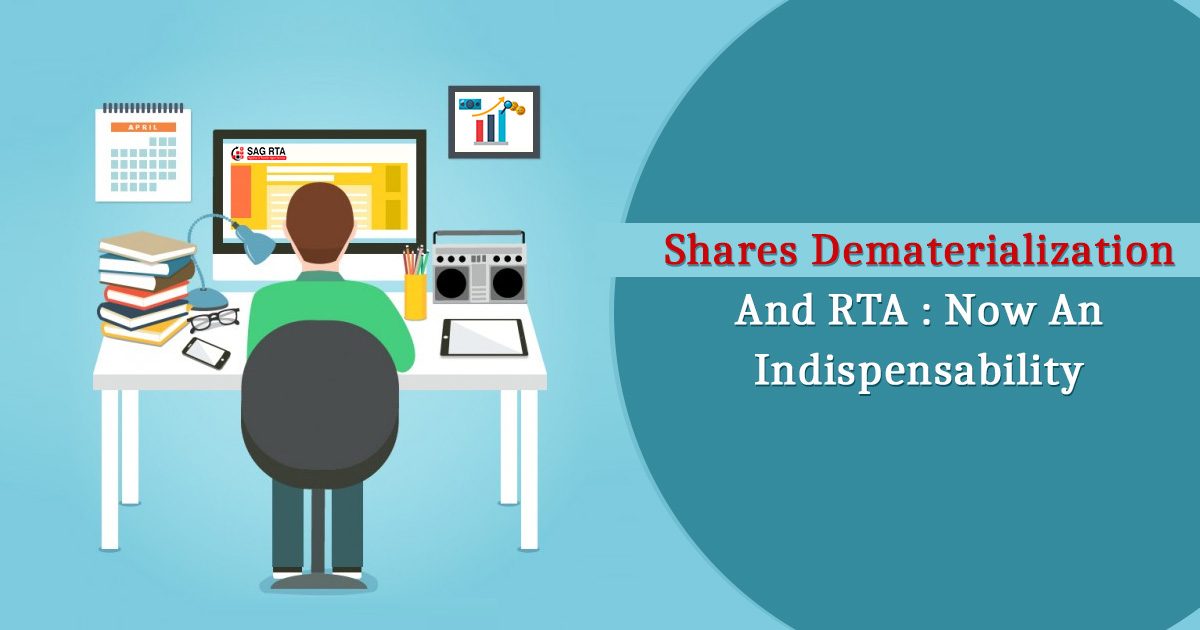As per the Depositories Act, 1996, an investor is allowed to hold securities in physical as well as electronic mode, which implies that a holder can hold the securities in physical form or electronic form or a part of it in physical form and another part in Demat form.
However, the amendment to Regulation 40 of Listing Obligation and Disclosure Requirements by the Securities and Exchange Board of India mandated the Demat mode for the payment of market trades in listed securities. This notifies that the securities can be transferred in dematerialized form only w.e.f 5th December 2018.
The date was then extended by SEBI to April 1, 2019. Also, as per the latest notification of the Companies Act 2019, it was required to mandatorily keep the shares and securities in the Demat form from 24th October 2018, which in turn makes companies unable to transfer physical shares and certificates from 1st October 2019.
This amendment made it compulsory for the shareholders to have shares in physical form to get their shares dematerialized for glitch-free transfers later. Many of the shareholders now have their holdings in dematerialized form or a Demat account, while some holders need to get a Demat account opened and get their physical shares dematerialized.
A Demat account is like a bank account that holds dematerialized securities & shares instead of cash.
Shareholders need to contact a SEBI-registered Depository Participant (DP) to get a Demat account opened in their name.
Shares Dematerialisation Process
The process of dematerialisation of shares involves the following steps:
- Submission of physical share certificate(s) and Dematerialisation Request Form (DRF) by Shareholder(s) to the concerned DP.
- Verification of physical share certificate(s) and DRF by the Depository.
- Upload of details specified in the DRF and certificates in the software system or application provided by the Depository.
- Generation of Dematerialisation Request Number (DRN).
- Electronic dispensation of DRF with the DRN stated on it, along with certificates, to the Registrars and Transfer Agents of the company (RTA) by the DP for authentication and approval.
- Intimation to the Registrar and Share Transfer Agent about the shareholders’ request by the DP via the electronic system of NSDL/CDSL.
- Validation of the request by the RTA.
- Acceptance of the request regarding dematerialisation in the respective software system or application and its confirmation by the Registrar & Share Transfer Agent.
- Digital formation & allotment of a relevant number of shares in the Demat account of shareholders by the Depository’s software system.
- Communication of the changes in the Demat account of the shareholder to the shareholder, followed by the endorsement of the DRF by the DP.
In Some Cases, it Continues With:
- Rejection of the dematerialisation request by the Company/RTA.
- Dispensation of an objection memo to the DP, with or without DRF & certificates, based on the cause behind the rejection.
- Removal of the reason behind the objection by the DP or shareholder within 15 days of receiving the objection memo.
Note:-
- DP or shareholder must remove the objections within 15 days; otherwise, the request and return DRF along with annexure certificates can be rejected by the company or Registrar and Transfer Agent.
- A new dematerialisation request can be made by the DP if required by the shareholder, followed by resubmission of the certificates to the company or RTA for dematerialisation.
- A new request cannot be made for the same securities until the company does not dismiss the initial request or RTA and DP is not notified about it.
For any queries or assistance, you may contact any SEBI-registered Registrar & Transfer Agent. SAG RTA is a SEBI-accredited category 1st service provider of all basic registrar & transfer agent services such as recording transactions, securities dematerialisation via NSDL and CDSL depository, changes in personal details, dividend payment through ECS transfer, along with additional services such as the settlement of EPF claims, regulatory reporting to the authorities, etc.









